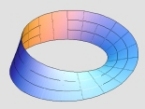Boozername
Posts: 13
Joined: 4/8/2015
Status: offline

|
October 44 report at Lone Sentry...
quote:
"A.P.C.B.C. May Become Most-Used German Pak 40 Ammunition" from Tactical and Technical Trends
An intelligence report on German Pak 40 antitank ammunition in WWII, from Tactical and Technical Trends, No. 51, October 1944.
[DISCLAIMER: The following text is taken from the U.S. War Department publication Tactical and Technical Trends. As with all wartime intelligence information, data may be incomplete or inaccurate. No attempt has been made to update or correct the text. Any views or opinions expressed do not necessarily represent those of the website.]
A.P.C.B.C. MAY BECOME MOST-USED GERMAN PAK 40 AMMUNITION
German abandonment of the use of hollow-charge projectiles and AP 40 tungsten carbide core ammunition for the 75-mm antitank gun Pak 40 is indicated by reports from United States observers in the field. This, it is expected, will be followed by adoption, as the most common type of ammunition. of the 14.96-pound armor-piercing capped ballistic cap (A.P.C.B.C.) with a muzzle velocity of 2,600 f/s and the 12.5-pound high explosive with a muzzle velocity of 1,800 f/s.
General characteristics of the 75-mm German antitank gun Pak 40 are: Weight in action, 3,040 pounds; barrel length, 126.14 inches without muzzle brake, and 145.75 inches with muzzle brake; ground clearance, 13.8 inches; height of shield, 48.6 inches; diameter of wheels, 35.43 inches; elevation, -5° to +22°; traverse, 65°.
The welded tubular trails of the weapon are frequently found on medium-caliber German guns manufactured or modified within the last 18 months. The gun shield is a new design of two 4-mm spaced plates and is probably proof against small arms up to, but not including, 20-mm armor-piercing ammunition. Hand or semiautomatic operation is provided.
Previous references to this weapon were published in TACTICAL AND TECHNICAL TRENDS. No. 18, page 4 and No. 25, page 9.
|
 Printable Version
Printable Version













 New Messages
New Messages No New Messages
No New Messages Hot Topic w/ New Messages
Hot Topic w/ New Messages Hot Topic w/o New Messages
Hot Topic w/o New Messages Locked w/ New Messages
Locked w/ New Messages Locked w/o New Messages
Locked w/o New Messages Post New Thread
Post New Thread